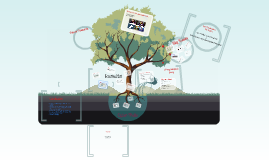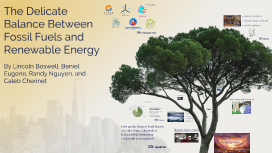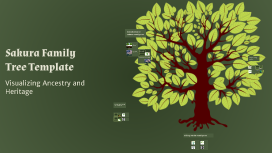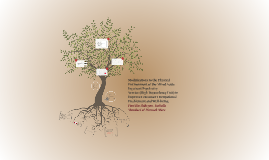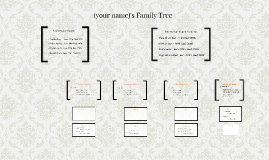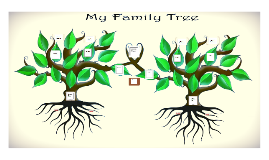Tree Template
Transcript: The Dark Tetrad Regression analysis showed that direct sadism uniquely predicted cyber-trolling on YouTube and other forum sites. Direct Sadism β = .44 Direct Sadism r = .40* Permanence Target mass audience Anonymity Time Convenience What about Cyber-Trolls? What is “trolling”? Study 2: Does Sadism Map Onto Core Characteristics of Cyber-Trolls? Psychopathy They are impulsive thrill seekers Narcissism They are egotistical and self-centered Machiavellianism They are strategic manipulators Sadism Seek opportunities to hurt people Direct vs. vicarious sadism A Psychological Study Direct Sadism β = .56*** Trolling Thanks for listening! Conclusion Cyber-Trolls: Just harmless pranksters? Cyber-Activities and the Law Study 1 Just Harmless Pranksters? Multiple regression analysis showed a strong, unique relationship between direct sadism and trolling. Machiavel -lianism Study 1 Someone who intentionally posts inflammatory material on the internet Someone who posts inappropriate remarks for their own amusement The elicited reactions reinforce cyber-trolling and nefarious amusement Dark tetrad personalities reported greater enjoyment of cyber-stalking on Facebook than others Narcissism r = .46** What are the personality and internet activities of cyber-trolls? No previous studies There are 4 suspects: Dark Tetrad (psychopathy, narcissism, Machiavellianism, sadism) Future Research Narcissism β = -.11* β = .44, SE = 0.68, t(100) = 2.05, p = .05 Cyber-Trolls β = .03 Cyber-bullying is defined as: “… a type of harassment using new technology. Whether it is criminal harassment depends on the facts of a case. Cyberbullies use social media (such as Facebook, Twitter, and YouTube), blogs, texting, instant messaging, and other internet avenues to engage in deliberate, repeated, and hostile behaviour intended to harm, embarrass, or slander someone. Although their work is public, cyberbullies are often anonymous and it is often harder to identify and stop them.” Cyber-bullying may also be defamation The Criminal Code (section 300) outlaws publishing a defamatory libel – material published, without lawful justification or excuse, likely to injure the reputation of any person by exposing them to hatred, contempt or ridicule, or designed to insult the person. Study 2: Are Cyber-Trolls Sadists? Cyber-Trolls: Who are they? Cyber-Trolls: Also Cyber-Bullies? Vicarious Sadism r = .33* Cyber-Activities and the Law Cyber-Trolls: Characteristics There is no specific legislation for cyber-bullying or cyber-trolling Civil Law Defamation: slander or libel Unsafe environment Responsibility for any consequences that perpetrator might reasonably have guessed would happen Criminal Law Harassment Defamatory libel Anywhere on the internet! Internet forums Imageboard, social news or entertainment sites (e.g., 4Chan, Reddit, 9Gag) Comment sections of various websites (e.g., news outlets) Social media websites (e.g., Facebook, Youtube) There is no specific legislation for cyber-bullying or cyber-trolling Civil Law Defamation: slander or libel Unsafe environment Responsibility for any consequences that perpetrator might reasonably have guessed would happen Criminal Law Harassment Defamatory libel Cyber-Trolls: A Psychology Study Cyber-Trolling and Bullying Facilitated by Technology Legal Implications: The Debate Cyber-Trolls: Also Cyber-Bullies? Results Study 1: Dark Personalities and Social Media Usage Trolling scale items: “I have sent people to shock websites for the lulz.” “I like to troll people in forums or the comments section of websites.” “The more beautiful and pure a thing is, the more satisfying it is to corrupt it.” The End Gaming Griefers Grief tourists Cyber-Trolls: Also Cyber-Bullies? Judith Donald (1996) Someone who engages in identity deception and manipulation Whitney Phillip’s (2012) Four Pillar Theory of Trolls Self-identify as trolls Vernacular language (e.g., plox, sauce, lulz) Trolling for the “lulz” (troll reward, troll food) Anonymity Vicarious Sadism Big Issues β = .19** Criminalize cyber-bullying or Educational Campaigns against Bullying Trolling is motivated by sadistic pleasure-seeking This may have important legal implications, especially in cases of extreme harassment with tragic outcomes Trolling indicates broader anti-sociality Technology has facilitated the damage that Dark Personalities can do Permanent damage Narcissists, direct sadists and vicarious sadists expressed greater enjoyment of cyber-trolling on YouTube than others. Cyber-Trolls: Where are they? Psychopathy β = .06 But there are other types of cyber-trolls… The case of Amanda Todd






